

Israel plans to annex West Bank territories
It's not even midday in the Jordan Valley and it’s already over 30 degrees Celsius in the shade. Ibrahim Daiq checks on the small green dates hanging from a small palm tree in his date grove on the outskirts of Jericho, a Palestinian city in the occupied West Bank. Everything looks fine for the upcoming harvest in September, he says. But what is coming next month is seriously worrying him.
In July, the Israeli government could enact legislation to annex the Jordan Valley and other parts of the West Bank. The potential move is likely to have huge repercussions in the region. "There is no clear path for peace in this decision," says Ibrahim Daiq. "We are very fearful about what is to come. It will just create a more insecure situation."
Read more: The West Bank and the Jordan Valley explained
What is the situation in Jericho?
Jericho is in the heart of the Jordan Valley, a large area of the occupied West Bank that runs along Jordan's border and was captured by Israelis in the Six-Day War in 1967.
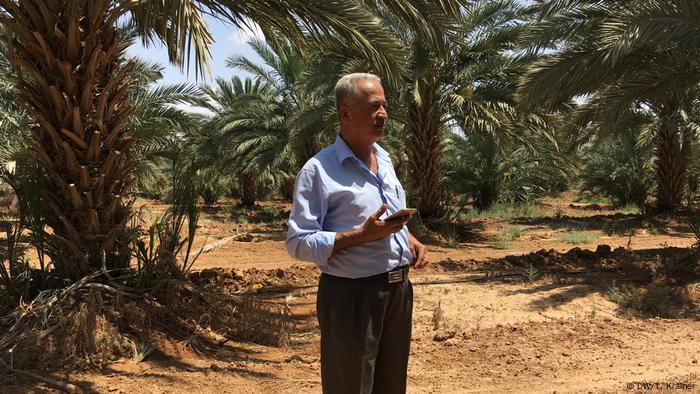
Farmer Ibrahim Daiq doesn't know whether he'll be able to harvest his dates in September
The majority of the West Bank, around 60%, is made up of land under full Israeli security and administrative jurisdiction. But Jericho itself, along with around 18% of the West Bank, is technically under Palestinian administration.
Israel’s annexation plan could change all that. The Jordan Valley could officially become part of Israeli sovereign territory. Some of the areas annexed may include Palestinian villages and Bedouin tribes. In an interview with Israeli newspaper Israel Hayom, Prime Minister Benjamin Netanyahu said Palestinians living in annexed areas would not receive Israeli citizenship.
Jericho itself, however, is likely to remain under Palestinian administrative control. But residents are concerned that there might be more restrictions and that access to other parts of the West Bank will become even more difficult.
Why make the move?
The Jordan Valley is an important economic and agricultural area for both Israelis and Palestinians, although Palestinians have difficulty accessing many areas. Successive Israeli governments have also seen it as a security belt against Arab States to the East.
The latest elections, and US President Donald Trump's controversial peace plan, have given Israel more room to exert its control. The new coalition agreement between Netanyahu's Likud party and Defense Minister Benny Gantz's Blue and White party allows for the annexation of the Jordan Valley and respective Jewish settlements as early as July.
While the US plan still envisions negotiations between Israelis and Palestinians to establish a Palestinian state, it offers Palestinians very limited enclaves and overall Israeli security control.
"The Trump Netanyahu deal — it's a game changer," says longtime Palestinian negotiator from Jericho, Saeb Erekat, in an interview with DW. "They want to cancel all agreements, they want to cancel the terms of reference, international law, resolutions of the Security Council and dictate a solution."
Read more: US pushes 'economic prosperity' for Palestinians — without Palestinians
Mapping the new borders
Currently, an Israeli-US mapping team is detailing annexation drawings, even under criticism from both sides. Some Israeli settlers, for example, oppose it because it includes the notion of a Palestinian state.
Read more: Trump's Golan recognition: A dangerous precedent?
"In July, sovereignty should be applied over the Jordan Valley, the northern Dead Sea and the Jewish settlements in Judea and Samaria [West Bank] regardless of the Trump plan," says David Elhayani, mayor of the Jordan Valley regional council settlements. He hopes that the rest of the plan will never come to fruition.
The Palestinian leadership, which cut off diplomatic ties with the Trump administration in 2017, has rejected the US proposal altogether. Last week, in response to the annexation plans, President Mahmoud Abbas called off security coordination with Israeli and American security agencies.
Erekat says annexation could have serious repercussions. "The Palestinian Authority was born to take Palestinians, through negotiations, from occupation to independence," he states.
"Now Netanyahu and Trump are saying, no, no, no, you will continue to be under occupation, but we will give it another name."
Aspirations for statehood fading
For many Palestinians, the idea of an independent state has gradually faded away. Since Israel occupied the area in 1967, it has controlled water resources, land and movement of its inhabitants.
Whatever the extent of the probable annexation, it would further squeeze cities like Jericho. "It is already difficult to move within our country," says Najwa Amar, a student from Jericho. "We already feel like foreigners in our own land. That's unacceptable."
Read more: Netanyahu corruption trial begins in Israel
Several EU countries, the UN and several Arab States have criticized the annexation plans as a violation of international law and as a potential end of a two-state-solution. Most countries are expected not to recognize the potential move by Israel.
But among Palestinians, many don't bet on any strong international stance to prevent any annexation plans at all.
It keeps date farmer Daiq worried about what will happen before the harvest. "The whole issue just brings more disillusion and pessimism that it's all over," he sighs.
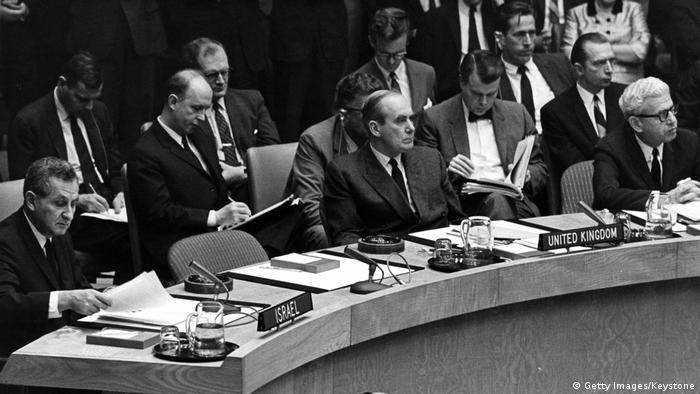
A history of the Middle East peace process
UN Security Council Resolution 242, 1967
United Nations Security Council Resolution 242, passed on November 22, 1967, called for the exchange of land for peace. Since then, many of the attempts to establish peace in the region have referred to 242. The resolution was written in accordance with Chapter VI of the UN Charter, under which resolutions are recommendations, not orders.
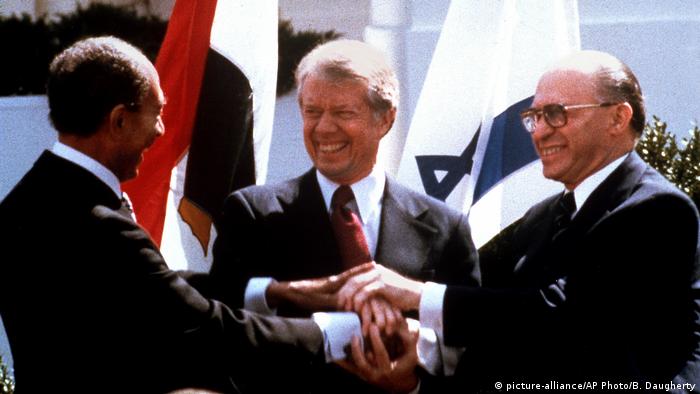
A history of the Middle East peace process
Camp David Accords, 1978
A coalition of Arab states, led by Egypt and Syria, fought Israel in the Yom Kippur or October War in October 1973. The conflict eventually led to the secret peace talks that yielded two agreements after 12 days. This picture from March 26, 1979, shows Egyptian President Anwar Sadat, his US counterpart Jimmy Carter and Israeli Prime Minister Menachem Begin after signing the accords in Washington.

A history of the Middle East peace process
The Madrid Conference, 1991
The US and the former Soviet Union came together to organize a conference in the Spanish capital city of Madrid. The discussions involved Israel, Jordan, Lebanon, Syria, and Palestinians — not from the Palestinian Liberation Organization (PLO) — who met with Israeli negotiators for the first time. While the conference achieved little, it did create the framework for later, more productive talks.
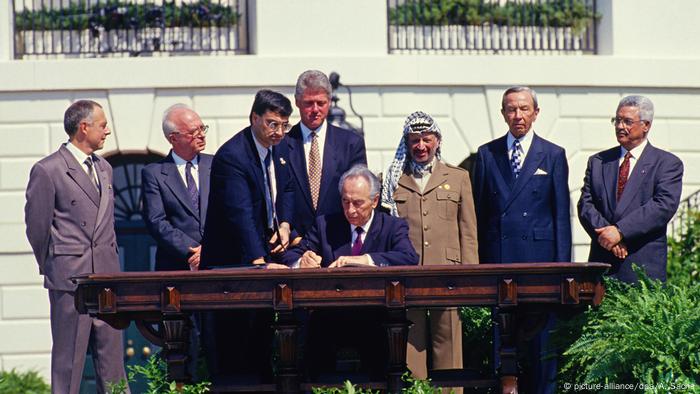
A history of the Middle East peace process
Oslo I Accord, 1993
The negotiations in Norway between Israel and the PLO, the first direct meeting between the two parties, resulted in the the Oslo I Accord. The agreement was signed in the US in September 1993. It demanded that Israeli troops withdraw from West Bank and Gaza and a self-governing, interim Palestinian authority be set up for a five-year transitional period. A second accord was signed in 1995.
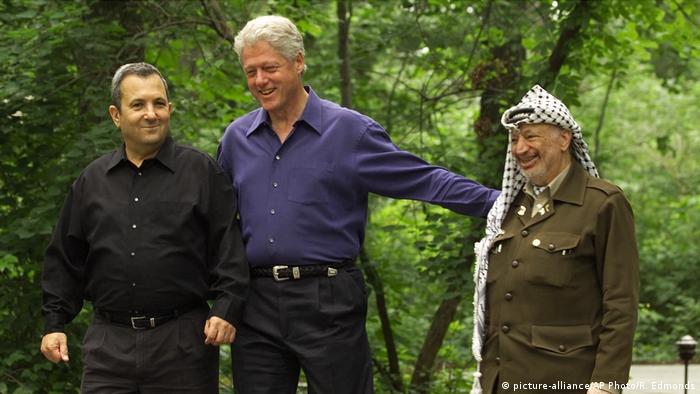
A history of the Middle East peace process
Camp David Summit Meeting, 2000
US President Bill Clinton invited Israeli Prime Minister Ehud Barak and PLO Chairman Yasser Arafat to the retreat in July 2000 to discuss borders, security, settlements, refugees and Jerusalem. Despite the negotiations being more detailed than ever before, no agreement was concluded. The failure to reach a consensus at Camp David was followed by renewed Palestinian uprising, the Second Intifada.
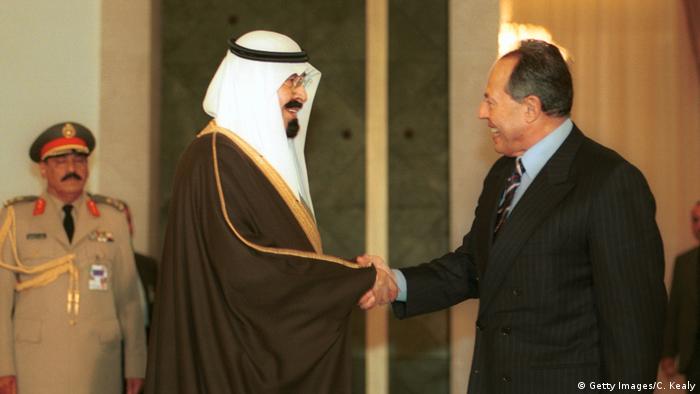
A history of the Middle East peace process
The Arab Peace Initiative, 2002
The Camp David negotiations were followed first by meetings in Washington and then in Cairo and Taba, Egypt — all without results. Later the Arab League proposed the Arab Peace Initiative in Beirut in March 2002. The plan called on Israel to withdraw to pre-1967 borders so that a Palestinian state could be set up in the West Bank and Gaza. In return, Arab countries would agree to recognize Israel.
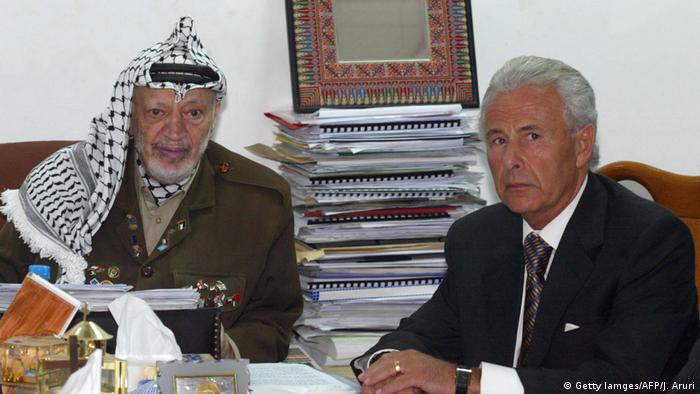
A history of the Middle East peace process
The Roadmap, 2003
The US, EU, Russia and the UN worked together as the Middle East Quartet to develop a road map to peace. While Palestinian Prime Minister Mahmoud Abbas accepted the text, his Israeli counterpart Ariel Sharon had more reservations with the wording. The timetable called for a final agreement on a two-state solution to be reached in 2005. Unfortunately, it was never implemented.
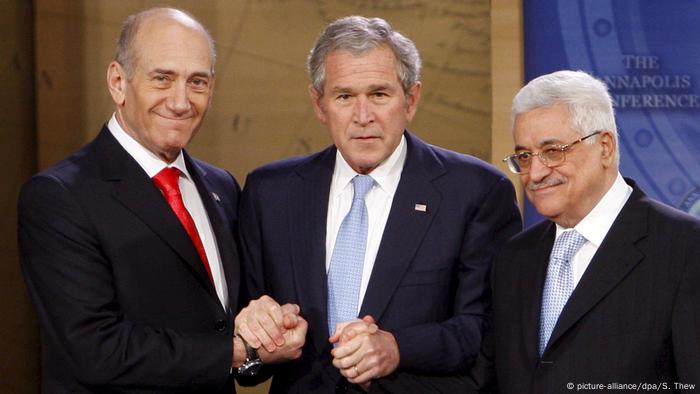
A history of the Middle East peace process
Annapolis, 2007
In 2007 US President George W. Bush hosted a conference in Annapolis, Maryland, to relaunch the peace process. Israeli Prime Minister Ehud Olmert and Palestinian Authority President Mahmoud Abbas took part in talks with officials from the Quartet and over a dozen Arab states. It was agreed that further negotiations would be held with the goal of reaching a peace deal by the end of 2008.
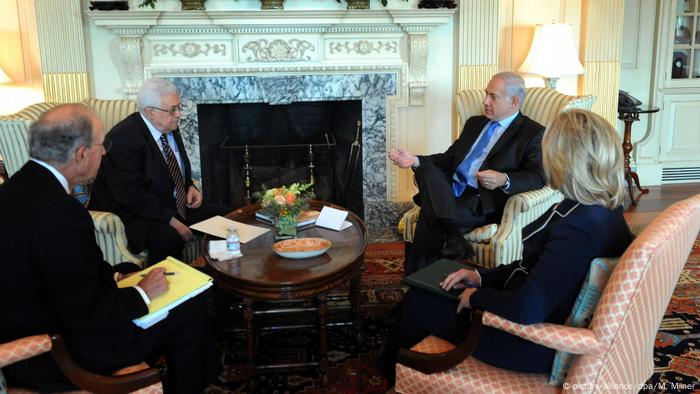
A history of the Middle East peace process
Washington, 2010
In 2010, US Middle East Envoy George Mitchell convinced Israeli Prime Minister Benjamin Netanyahu to agree to and implement a ten-month moratorium on settlements in disputed territories. Later, Netanyahu and Abbas agreed to relaunch direct negotiations to resolve all issues. Negotiations began in Washington in September 2010, but within weeks there was a deadlock.

A history of the Middle East peace process
Cycle of escalation and ceasefire continues
A new round of violence broke out in and around Gaza late 2012. A ceasefire was reached between Israel and those in power in the Gaza Strip, which held until June 2014. The kidnapping and murder of three Israeli teenagers in June 2014 resulted in renewed violence and eventually led to the Israeli military operation Protective Edge. It ended with a ceasefire on August 26, 2014.
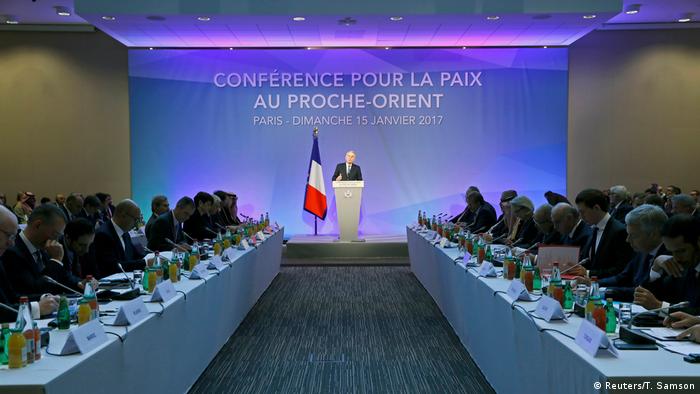
A history of the Middle East peace process
Paris summit, 2017
Envoys from over 70 countries gathered in Paris, France, to discuss the conflict between Israelis and Palestinians. Netanyahu slammed the discussions as "rigged" against his country. Neither Israeli nor Palestinian representatives attended the summit. "A two-state solution is the only possible one," French Foreign Minister Jean-Marc Ayrault said at the opening of the event.
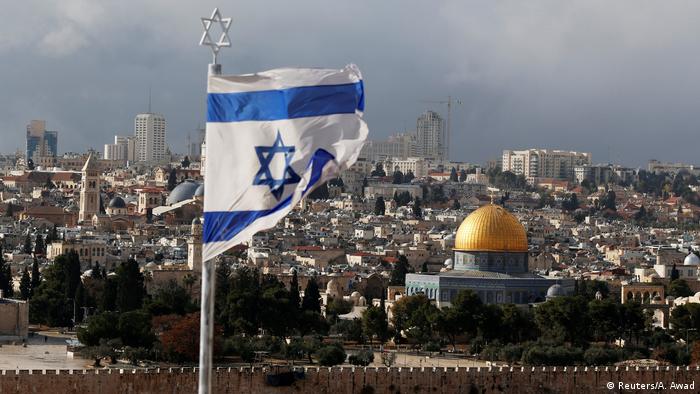
A history of the Middle East peace process
Deteriorating relations in 2017
Despite the year's optimistic opening, 2017 brought further stagnation in the Israeli-Palestinian peace process. A deadly summer attack on Israeli police at the Temple Mount, a site holy to both Jews and Muslims, sparked deadly clashes. Then US President Donald Trump's plan to move the embassy to Jerusalem prompted Palestinian leader Abbas to say "the measures ... undermine all peace efforts."
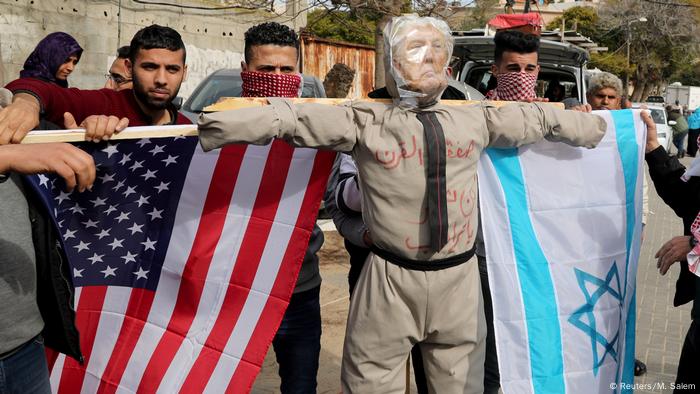
A history of the Middle East peace process
Trump's peace plan backfires, 2020
US President Donald Trump presented a peace plan that freezes Israeli settlement construction but retains Israeli control over most of the illegal settlements it has already built. The plan would double Palestinian-controlled territory, but asks Palestine to cross a red line and accept the previously constructed West Bank settlements as Israeli territory. Palestine rejected the plan outright.
Author: Aasim Saleem
Every day, DW's editors send out a selection of the day's news and quality feature journalism. Sign up for the newsletter here.

0 thoughts to “Most popular dating app in west bank palestine”